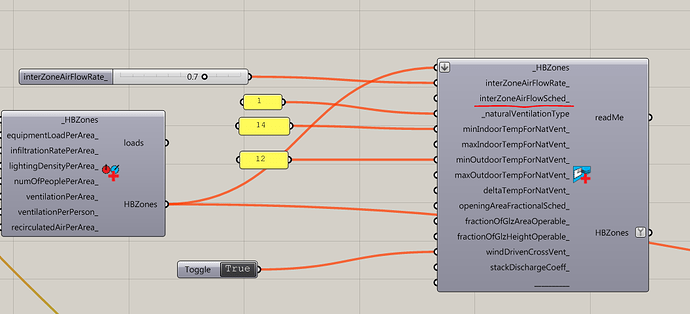Hi there,
Looking for some genius insight on simulating natural ventilation in trombe wall systems here. Does anyone know of the best way to simulate them in Honeybee? Is there a component for it similar to the way an earth duct can be simulated?
Basically, I’m working on a project set in Boston with a mid-rise residential apartment tower. Given that Boston is a cold climate, we are trying to understand whether a trombe wall system would work for the residential rooms, absorbing heat from the sun during the day and releasing it at night when residents will return home. Our design idea was that first, we need to insulate the room very well to keep it warm during the winter, then we will introduce window ventilation to cool the room down when it overheats from internal gain.
From the basic research we found, we set up a test model with two honeybee zones, one representing the “trombe zone” and one representing the main room zone, then we combine the two zones by solving adjacency. We had to include a window on the south facade of the room to allow daylight and views into the room, as well as the ventilation that is supposedly going to come into the room and help with the overheating. The idea is that when it gets hot enough, both the exterior glazing of the trombe zone and the window of the room would be opened to allow ventilation into the room and cool it down.
So far, the problem we’ve run into is getting the ventilation across the two zones modeled correctly. Once the two zones’ adjacencies are solved, the window of the room becomes an interior window and gets excluded from the calculation of the _Set EP Airflow component. We’ve tried to work around this problem by making the window an air wall and force cross ventilation across the two zones, which makes for a cumbersome way to do this. And the comfort results are strange in that during the fall months when the cool outside air should help with cooling the internal heat gain, the results are still showing it’s too hot.
Can anyone shed some light on this? Thanks!!! Sorry for the long post.
trombe_wall_room.gh (720.9 KB)
trombe wall.3dm
